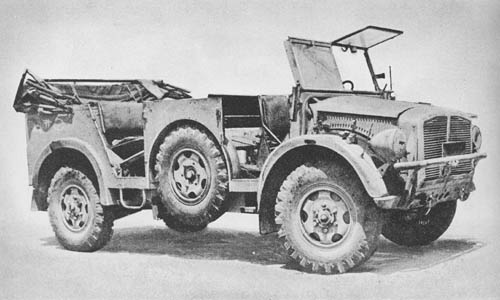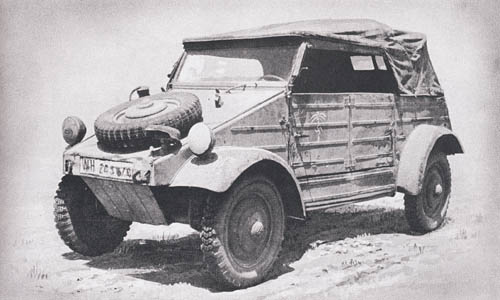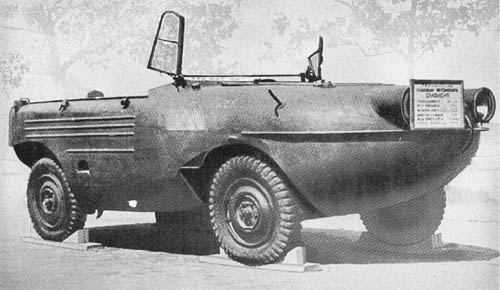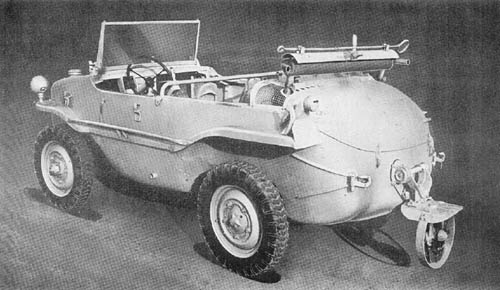
The German reconnaissance car, together with its eight modified versions, has the standard No. 2 chassis of the heavy armored car (s.Pkw.) with the engine mounted in the front end. This chassis is similar to the No. 1 chassis used for the 4-wheeled armored car (Sd. Kfz. 222) with the engine mounted in the rear. Equipment stowage brackets are provided throughout the car.
This vehicle is used for command reconnaissance. It has a seating capacity of eight, including driver and a trailer load capacity of 2,200 pounds.
A novel feature of the power train provides for four-wheel steering which can be effected by a hand lever from the driver’s seat. This enables the car to climb out of deep ruts or turn sharply about in any direction.
The highway radius of action of this vehicle is 186 miles on a fuel tank capacity of 30 gallons. Its combat weight is 9,240 pounds.
SPECIFICATIONS
| Weight | 6,930 lb. | |
| Length | 15 ft., 10 ins. | |
| Width | 6 ft., 6 ins. | |
| Height | 6 ft., 8 ins. | |
| Ground clearance | 9 ins. | |
| Tread centers | 64 ins. | |
| Wheelbase | 118 ins. | |
| Width of track | 8.5 ins. | |
| Size tires | 8.27 x 18 | |
| Fording depth | 2 ft. | |
| Theoretical radius of action | ||
| Roads | 186 miles | |
| Cross-country | 155 miles | |
| Speed | ||
| Roads | 35 m.p.h. | |
| Cross-country | 25 m.p.h. | |
| Armor | ||
| Front plate | ||
| Sides | ||
| Armament | ||
| Ammunition (rds.) | ||
| Engine | Horch V-8 90 hp. | |
| Transmission | 4 speeds forward, 1 reverse, high and low range | |
| Steering | Normal plus 4-wheel steering | |
| Crew | 8 |
German: p. 60


